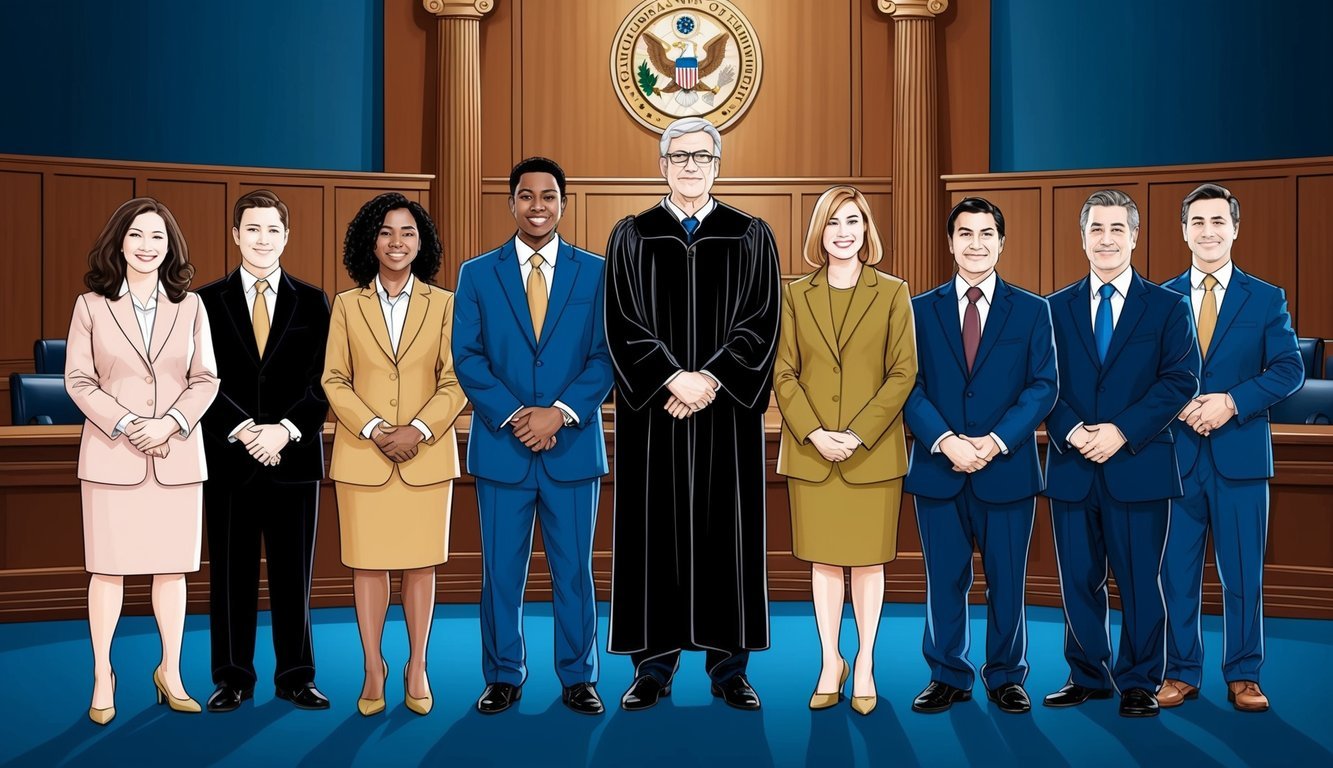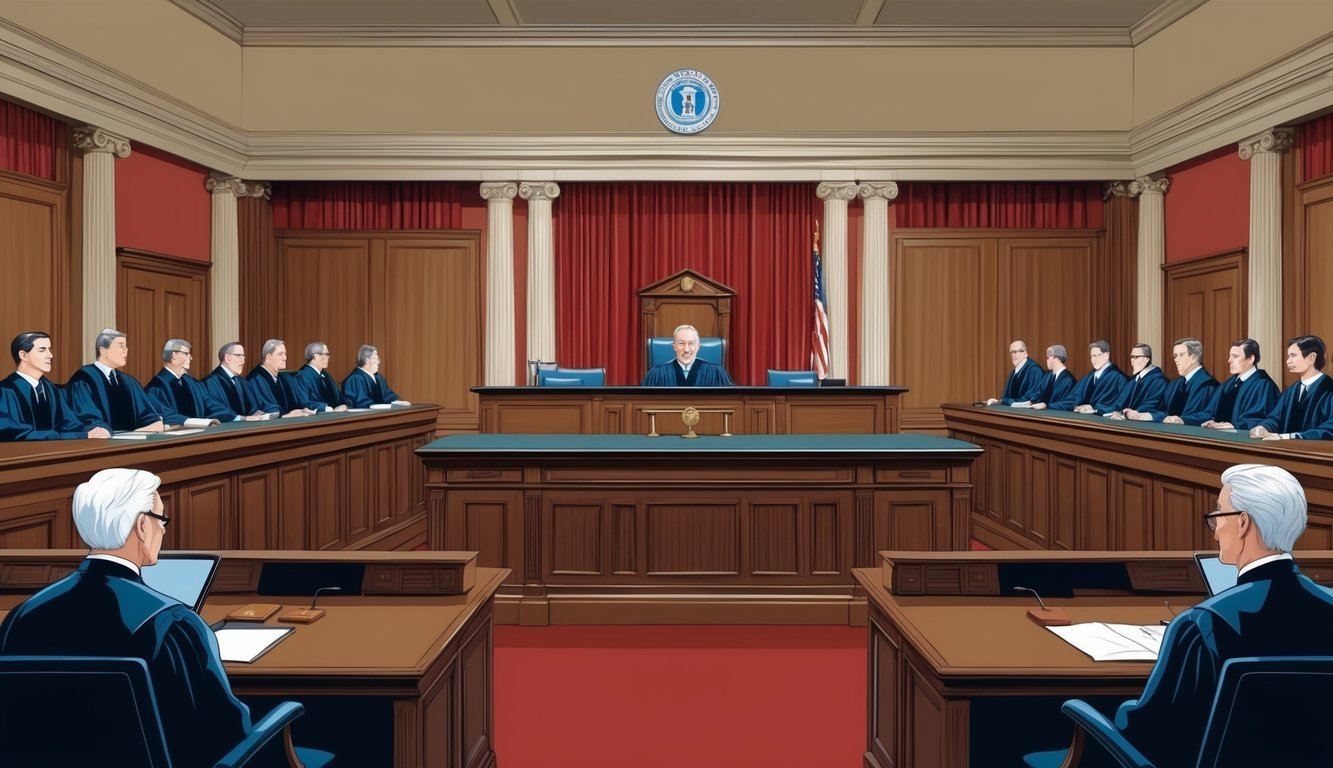Class actions represent a significant legal mechanism that allows multiple plaintiffs to collectively pursue claims against one or more defendants. When it comes to defendants in class actions, the stakes are often high, with potential financial and reputational risks on the line.
Defendants in class actions face unique challenges, including the need to develop comprehensive defense strategies and navigate complex legal procedures. These cases can involve large groups of plaintiffs, making them particularly resource-intensive for defendants. Companies and organizations may find themselves defending against claims related to product liability, employment practices, or consumer protection issues.
The certification process is a critical stage for defendants in class actions. During this phase, you have the opportunity to challenge whether the case meets the necessary criteria to proceed as a class action. This can involve arguing against the commonality of claims, the adequacy of class representatives, or the superiority of class treatment. Defendant class actions are less common but can also occur, where multiple defendants are grouped together to face similar claims.
Key Takeaways
- Class actions present unique challenges for defendants, requiring robust legal strategies.
- The certification process is a crucial stage where defendants can challenge the validity of the class action.
Overview of Class Actions

Class actions are powerful legal mechanisms that allow multiple plaintiffs to collectively pursue claims against defendants. They provide an efficient way to address widespread harm while ensuring judicial economy.
Definition and Purpose
A class action is a type of lawsuit where one or more plaintiffs represent a larger group of individuals with similar legal claims. The purpose is to aggregate numerous small claims into a single, more manageable case. This approach benefits you as a potential class member by providing access to justice that might otherwise be impractical or too costly to pursue individually.
Class actions serve to level the playing field between large corporations and individual consumers or employees. They can address various issues, from product defects to employment discrimination. By consolidating similar claims, class actions promote consistency in legal outcomes and can lead to broader policy changes.
Class Action Legal Framework
The legal framework for class actions in the United States is primarily governed by Rule 23 of the Federal Rules of Civil Procedure. This rule outlines the requirements for certifying a class action in federal court. State courts often have similar rules.
To proceed as a class action, your case must meet specific criteria:
- Numerosity: The class must be so large that individual joinder is impracticable.
- Commonality: There must be questions of law or fact common to the class.
- Typicality: The claims of the representative parties must be typical of the class.
- Adequacy: The representatives must fairly and adequately protect class interests.
The certification process is a critical stage in class action litigation. If certified, the court will define the class and appoint class counsel. You, as a potential class member, may have the option to opt-in or opt-out of the action, depending on the type of class action.
Defendants in Class Actions
In class action lawsuits, defendants face unique challenges and responsibilities. They must navigate complex legal processes while protecting their interests against potentially large groups of plaintiffs.
Roles and Responsibilities
As a defendant in a class action, you’re tasked with responding to allegations made by a representative plaintiff on behalf of a larger group. You must work closely with your defense counsel to develop a comprehensive strategy. This often involves:
- Analyzing the merits of the case
- Assessing potential damages
- Preparing for discovery processes
- Evaluating settlement options
Your legal team plays a crucial role in managing the complexities of class action lawsuits. They’ll help you navigate procedural requirements and represent your interests throughout the litigation.
Common Defenses
When facing a class action, you have several defense strategies at your disposal. These may include:
- Challenging class certification
- Arguing lack of commonality among plaintiffs
- Demonstrating compliance with relevant laws and regulations
- Disputing damages calculations
Defendant class actions present unique opportunities for defense. In these cases, you might argue that the named defendants don’t adequately represent the interests of the entire defendant class.
Your defense counsel may also explore options to limit potential judgments against you. This could involve negotiating settlements or seeking to dismiss certain claims early in the litigation process.
The Certification Process

The certification process is a crucial stage in defendant class actions. It involves meeting specific criteria and potentially facing challenges from opposing parties.
Criteria for Certification
To certify a defendant class, you must satisfy Rule 23 requirements. Numerosity demands a class size large enough to make individual joinder impracticable. Commonality requires shared legal or factual questions among class members.
Typicality ensures the class representative‘s claims align with those of the class. You need to demonstrate that the representative will adequately protect class interests. This adequacy criterion is particularly important in defendant class actions.
Challenging Certification
Opposing parties may contest class certification. They might argue that the proposed class fails to meet Rule 23 criteria. Challenges often focus on the adequacy of the class representative.
You may face scrutiny regarding your ability to represent the entire class fairly. Opponents might question whether you possess sufficient resources or expertise to defend the class effectively.
Courts carefully examine these challenges to ensure due process for all potential class members. The certification decision can significantly impact the course of the litigation.
Class Representatives and Class Members

Class representatives and class members play crucial roles in class action lawsuits. Their rights, obligations, and selection processes shape the dynamics of these legal proceedings.
Rights and Obligations
As a class representative, you have specific responsibilities to the class you represent. You must fairly and adequately protect the interests of all class members. This includes actively participating in the case, providing testimony, and making decisions that affect the entire group.
Class members, on the other hand, have the right to be informed about the lawsuit and its progress. You can opt out of the class if you wish to pursue individual claims.
Both representatives and members share the right to any settlement or judgment awarded in the case. However, class representatives may receive additional compensation for their time and effort.
Class Representative Selection
The selection of a class representative is a crucial step in a class action. Courts look for individuals who have claims typical of the class and can adequately represent its interests.
Lead plaintiffs are often chosen based on their financial stake in the outcome of the case. This ensures they have a strong motivation to pursue the lawsuit vigorously.
In some cases, multiple named plaintiffs may be selected to represent different subgroups within the class. This helps ensure that diverse interests within the class are adequately represented.
The court must approve the selected class representatives to ensure they meet the necessary criteria for fair representation.
Notice to Class Members

Class action notices inform potential class members about lawsuits that may affect their rights. These communications explain the nature of the case and outline options for participation.
Opting In and Opting Out
You have important choices when receiving a class action notice. Opting in means you actively join the lawsuit, potentially sharing in any settlement or judgment. Opting out preserves your right to pursue individual legal action.
Rule 23 of the Federal Rules of Civil Procedure governs class action notices. It requires clear, concise language detailing your legal rights and options.
Class action settlements often involve specific notices. These outline proposed terms and your right to object or exclude yourself.
Pay attention to deadlines. Failing to respond may automatically include you in the class, limiting future legal options.
Consider consulting an attorney to understand the full implications of your choice. Your decision can significantly impact your rights and potential compensation.
Legal Representation in Class Actions

Class actions involve complex legal processes that require specialized representation. The appointment of class counsel and their duties are crucial elements in ensuring fair representation for all parties involved.
Appointment of Class Counsel
The court appoints class counsel to represent the interests of the entire class. You should know that this process is critical to the success of a class action lawsuit. The court considers several factors when selecting counsel, including their experience in handling similar cases, knowledge of applicable laws, and resources available to represent the class effectively.
Lead plaintiffs often play a role in nominating class counsel. They may suggest attorneys who have demonstrated expertise in the relevant legal areas. The court carefully evaluates these nominations to ensure the chosen counsel can adequately represent the class’s interests.
Duties and Compensation
Class counsel has significant responsibilities towards the class members. You can expect them to communicate important case developments, negotiate settlements, and vigorously advocate on your behalf. They must act in the best interests of the entire class, not just individual members.
Compensation for class counsel is typically determined by the court. It may be a percentage of the settlement or a fee based on hours worked. The court reviews the fee arrangement to ensure it’s fair and reasonable, considering the complexity of the case and the results achieved for the class.
Class counsel’s duties extend to protecting the interests of absent class members. They must ensure that any settlement proposal is in the best interests of the entire class, not just the named plaintiffs.
Settlements in Class Actions

Class action settlements provide a means for resolving large-scale disputes efficiently. These agreements aim to compensate affected parties and modify defendant behavior.
The Settlement Process
You may encounter a settlement offer at any stage of a class action lawsuit. Defendants often propose settlements to avoid lengthy trials and minimize potential damages. The settlement agreement outlines compensation terms and any required changes in business practices.
Negotiations typically involve class representatives, attorneys, and the defendant. You’ll find that mediators sometimes facilitate these discussions. The goal is to reach a fair compromise that addresses class members’ concerns while providing closure for the defendant.
Settlement terms may include monetary compensation, product replacements, or injunctive relief. The latter refers to court-ordered changes in the defendant’s behavior or practices.
Approval and Distribution of Settlement Funds
Once parties agree on settlement terms, the process moves to court approval. A judge reviews the settlement to ensure fairness and adequacy for all class members. This step protects your interests as a potential beneficiary.
If approved, you’ll receive notice of the settlement, including instructions on how to claim your share. A claims administrator typically manages the distribution process. They’ll verify your eligibility and calculate your portion of the common fund.
Settlement funds are often distributed on a pro-rata basis, meaning you’ll receive a share proportional to your losses. In some cases, you might see different tiers of compensation based on the extent of harm suffered.
Litigation Strategies for Defendants
Defendants in class actions face unique challenges that require careful planning and execution. You must employ strategic approaches to manage complex legal landscapes and leverage expert knowledge effectively.
Managing Multifaceted Litigation
As a defendant, you need to navigate the intricate web of legal claims in class actions. Your defense counsel should develop a comprehensive strategy to address multiple plaintiffs simultaneously.
Consider creating a centralized document management system to track all case-related information. This will help you maintain consistency across various legal proceedings.
You may benefit from motion practice to limit the scope of the class action. Seek opportunities to challenge class certification or propose subclasses to manage the litigation more effectively.
Explore alternative dispute resolution methods when appropriate. Mediation or arbitration can sometimes offer more favorable outcomes and reduce legal expenses.
Utilizing Expert Witnesses
Expert witnesses play a crucial role in defending against class actions. You should carefully select and prepare these professionals to support your case.
Identify experts with relevant expertise and credibility in the specific areas of contention. Their testimony can significantly influence the court’s understanding of complex issues.
Work closely with your experts to develop clear, compelling presentations. Use visual aids and data visualizations to make technical information more accessible to judges and juries.
Consider using economic analysis to challenge damages calculations or liability claims. Expert economists can provide valuable insights into market dynamics and potential impacts.
Prepare your experts thoroughly for depositions and cross-examinations. Anticipate challenging questions and practice concise, accurate responses to strengthen your defense.
Appeals and Post-Judgment Actions

Defendants in class actions have several options to challenge unfavorable rulings. You should be aware of the grounds for appeals and the processes involved in enforcing judgments against defendants.
Grounds for Appeals by Defendants
You can appeal class action rulings on various grounds. Denial of class certification is a common basis for appeal. You may challenge the court’s decision if it improperly applied legal standards or made clear errors in factual findings.
Errors in jury instructions or evidence admissibility can also form grounds for appeal. You should carefully review the trial record to identify potential issues. Procedural errors, such as improper notice to class members, may provide additional grounds.
Constitutional challenges, like due process violations, can be powerful appellate arguments. You might argue that the class action mechanism itself violated your rights in certain circumstances.
Enforcement and Collection of Judgments
Once a judgment is entered, you face the prospect of enforcement actions. Plaintiffs may seek to collect through various means, including liens on your assets or garnishment of accounts.
You can request a stay of enforcement pending appeal by posting a bond. This protects your assets while the appeal is pending. The Federal Rules provide guidance on stays and supersedeas bonds.
In some cases, you might negotiate a settlement even after judgment. This can provide certainty and avoid protracted collection efforts. You should weigh the costs and benefits of continued litigation against settlement options.
Be prepared for post-judgment discovery aimed at identifying your assets. You may need to disclose financial information to satisfy the judgment.
Impact of Class Actions on Industry

Class action lawsuits have profoundly shaped corporate behavior and legal landscapes across industries. These cases have particularly influenced securities, employment, and antitrust practices, prompting significant changes in how companies operate and manage risk.
Securities Litigation
Securities class actions have become a powerful tool for shareholders seeking redress. The Private Securities Litigation Reform Act has altered the dynamics of these cases, setting stricter pleading standards and changing lead plaintiff selection processes. You’ll find that companies now face increased scrutiny of their financial disclosures and public statements.
These lawsuits often result in substantial settlements, impacting stock prices and investor confidence. Shareholder-initiated class actions can have ripple effects across entire industries, prompting non-targeted firms to enhance their governance practices.
Employment and Antitrust Implications
In the employment sphere, class actions have led to significant changes in workplace policies and practices. You’ll notice companies investing more in compliance and training to mitigate risks associated with discrimination, wage, and hour claims.
Antitrust class actions have reshaped competitive landscapes in various sectors. These suits often challenge pricing practices, market allocation agreements, and other anti-competitive behaviors. As a result, you’ll see industries adapting their strategies to avoid potential legal pitfalls.
The threat of class actions has prompted many businesses to implement robust internal compliance programs. You’ll find that proactive measures often include:
- Regular policy reviews
- Enhanced employee training
- Improved documentation practices
- Stronger whistleblower protections
Evolving Legal Landscape

The legal landscape for class action defendants has undergone significant changes in recent years. Courts and legislators have introduced new rules and interpretations that impact how these cases are handled.
Recent Supreme Court Decisions
The Supreme Court has issued several rulings that reshape class action litigation. In 2011, the Wal-Mart v. Dukes decision raised the bar for class certification. This ruling emphasized the need for commonality among class members’ claims.
The Court also addressed arbitration clauses in consumer contracts. These decisions have made it harder for plaintiffs to bring class actions in certain cases. You’ll find that many companies now include arbitration clauses in their agreements to limit class action exposure.
Constitutional challenges to class actions have also been considered by the Court. These rulings affect how you, as a defendant, can approach your defense strategy.
Emerging Trends and Legislative Changes
The Class Action Fairness Act (CAFA) of 2005 marked a significant shift in class action litigation. CAFA expanded federal jurisdiction over many class actions, giving you more opportunities to remove cases to federal court.
Recent amendments to Federal Rule of Civil Procedure 23 have refined class action procedures. These changes affect notice requirements and settlement approvals. You’ll need to stay informed about these updates to effectively navigate class action defenses.
State legislatures have also been active in this area. Some states have passed laws limiting class actions or imposing new requirements on plaintiffs. As a defendant, you should be aware of these state-specific rules that may apply to your case.
Frequently Asked Questions

Class action lawsuits involve complex legal procedures and requirements. Understanding the key aspects can help you navigate these cases more effectively.
What are the qualifications for a lawsuit to be designated as a class action?
To qualify as a class action, a lawsuit must meet specific criteria. The class must be so large that individual lawsuits would be impractical. There must be common legal or factual issues among class members. The claims of the representative parties must be typical of the class.
What defines a class member in a class action lawsuit?
A class member is an individual who shares common characteristics with others affected by the defendant’s actions. You may be automatically included if you meet the defined criteria, unless you choose to opt out.
What are the various types of class action lawsuits?
Class actions can cover a wide range of legal issues. Common types include consumer protection, securities fraud, employment discrimination, and product liability cases. Each type has its own unique characteristics and legal requirements.
What are the potential risks associated with joining a class action lawsuit?
By joining a class action, you may waive your right to pursue an individual lawsuit. The compensation in class actions is often lower than in individual cases. You have limited control over the litigation process and settlement negotiations.
Can there be more than one defendant in a class action lawsuit?
Yes, class actions can involve multiple defendants. This is common in cases where several parties are alleged to have contributed to the harm suffered by the class members. Defendant class actions are also possible, though less common.
What is the significance of Rule 23 in class action litigation?
Rule 23 of the Federal Rules of Civil Procedure governs class actions in federal courts. It outlines the requirements for class certification, notice to class members, and court approval of settlements. Understanding Rule 23 is crucial for both plaintiffs and defendants in class action cases.

